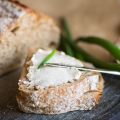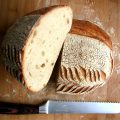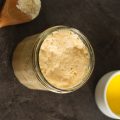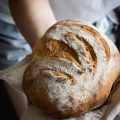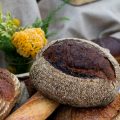Sourdough’s complex, tangy flavor makes it a baker’s dream. But did you know how versatile this leavening method can be? From hearty rye to gluten-free types of sourdough bread, sourdough adapts well to any style. However, many beginners find sourdough intimidating with its need for starters and long fermentation. This leaves would-be artisan bakers stuck with subpar store-bought loaves.
This article will unlock sourdough’s secrets. You’ll discover various types of sourdough bread, deep dive into baking techniques, and bake a gorgeous loaf full of complex flavor. With a little time and know-how, you can level up your homemade bread with delicious sourdough.
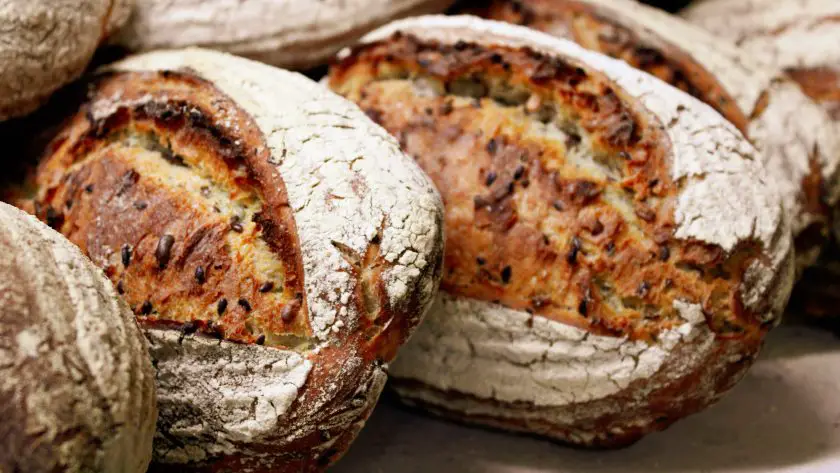
Table of Contents
- Traditional Sourdough
- Whole Wheat Sourdough
- No-Knead Sourdough Bread
- Rye Sourdough
- Borodinsky Bread
- San Francisco Sourdough Bread
- Spelt Sourdough Bread
- Sourdough Potato Bread
- Amish Friendship Bread
- Maltese Bread
- Pumpernickel
- Gluten-Free Sourdough
- Sweet Sourdough Varieties
- So Many Types of Sourdough to Try!
- Types Of Sourdough Bread: FAQs
Traditional Sourdough
A warm, crusty loaf of traditional sourdough bread—there’s nothing quite like it. This type of sourdough bread has been made for centuries using a natural yeast starter, giving it a distinctly tangy flavor and chewy texture.
Classic Sourdough Bread
The classic sourdough recipe uses only four simple ingredients: flour, water, salt, and a mature sourdough starter. Typically a blend of bread flour and whole wheat flour is used. The wheat flour gives the bread structure, while the whole wheat lends nutrition and a nutty flavor.
After mixing the dough, it ferments for an extended period, allowing the natural yeasts and bacteria to produce lactic acid, giving traditional sourdough its signature sour taste. The long fermentation also develops gluten, creating that chewy, rustic texture sourdough is known for.
Shaping the dough and allowing it to proof before baking encourages oven spring, or expansion, creating the bread’s irregular holes and crunchy crust. While traditional sourdough takes patience and some practice, the payoff of biting into a freshly baked loaf is so worth it.
Origin of Traditional Sourdough
The origins of traditional sourdough bread can be traced back thousands of years. Before commercial yeast was available, ancient bakers harnessed the power of wild yeast in the air to leaven bread. They saved a bit of dough as a starter for the next loaf. This time-honored tradition of sourdough breadmaking lives on today.
While traditional sourdough requires more time than yeasted breads, the depth of flavor and satisfying chew make it a favorite artisan-style loaf. For an authentic taste of history, try your hand at baking a classic sourdough.
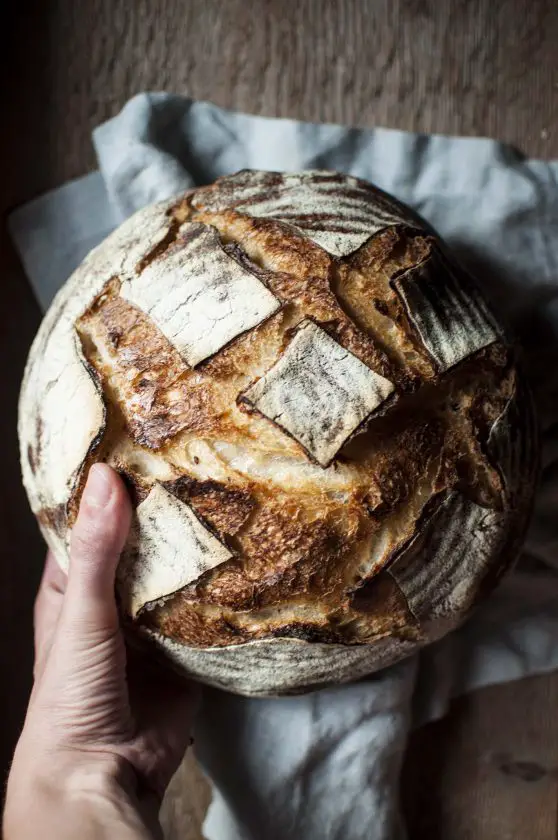
Whole Wheat Sourdough
For those seeking a healthier, more nutritious sourdough, whole wheat sourdough bread is a fantastic option. Made with whole wheat flour instead of regular white flour, this type of sourdough packs in all the nutrients of the entire wheat berry.
Nutritional Benefits
Whole wheat flour contains the bran and germ of the wheat, which provide important nutrients like fiber, protein, vitamins, and minerals. These parts get stripped away during the refining process to make white flour. Baking with nutrient-rich whole wheat flour gives your sourdough bread a nutritional boost.
Some key nutrients in whole wheat flour include:
- Fiber – Helps lower cholesterol and promotes healthy digestion. Whole wheat flour has up to 4 times more fiber than white.
- Protein – Provides sustained energy and helps build and repair muscles. Whole wheat offers more protein than white flour.
- B Vitamins – Aid in converting food into energy. Whole wheat flour contains B vitamins lost in refining.
- Iron – Essential for delivering oxygen to muscles and the brain. More plentiful in whole wheat.
- Magnesium – Supports bone health and heart function. Whole wheat flour packs more magnesium.
So if you’re looking for a sourdough with more nutrients than a basic white loaf, give wholesome whole wheat sourdough a try. The nutty flavor and hearty texture make delicious sandwiches too. Your body will thank you.
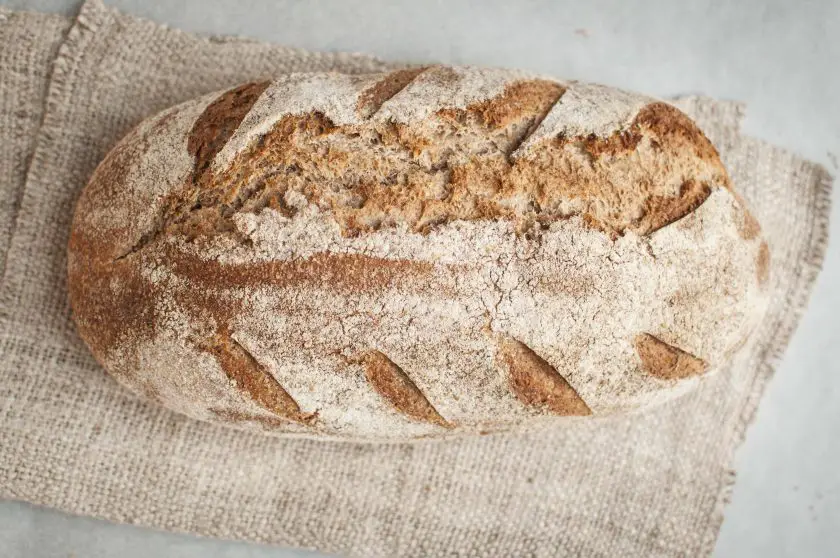
No-Knead Sourdough Bread
For those looking to simplify sourdough baking, no-knead sourdough bread offers all the delicious flavor with a fraction of the effort. This innovative technique streamlines the breadmaking process while still harnessing the power of long fermentation.
Ease of Preparation
No-knead sourdough couldn’t be easier to prepare. You simply mix together flour, water, salt and your sourdough starter. Unlike traditional recipes, there is no intensive kneading required. After a brief stir and short rest, you shape the shaggy dough into a round and let it slowly ferment for 12-18 hours. This extended fermentation develops complex flavors as the yeasts and bacteria work their magic.
Benefits of No-Knead Method
Skipping the kneading step makes sourdough more approachable for beginners. It also allows the gluten to develop naturally over time through gentle stretching and folding during fermentation. This no-work method results in a soft, pillowy crumb and characteristic hole structure. An overnight rest fits conveniently into anyone’s schedule. Just mix it before bed and wake up to a fresh sourdough ready for baking!
(Speaking of beginner recipes, you can start from the top with my beginner sourdough bread recipe!)
Perfect For Busy Home Bakers
From mixing to shaping, no-knead sourdough bread only takes about 10 minutes of active effort. You let time and patience do the rest of the work. For busy home cooks with hectic lives, this simplified technique makes artisan sourdough loaf totally doable. All the delicious sourdough flavor without the fuss. Give no-knead sourdough a try for satisfying homemade bread with minimal effort.
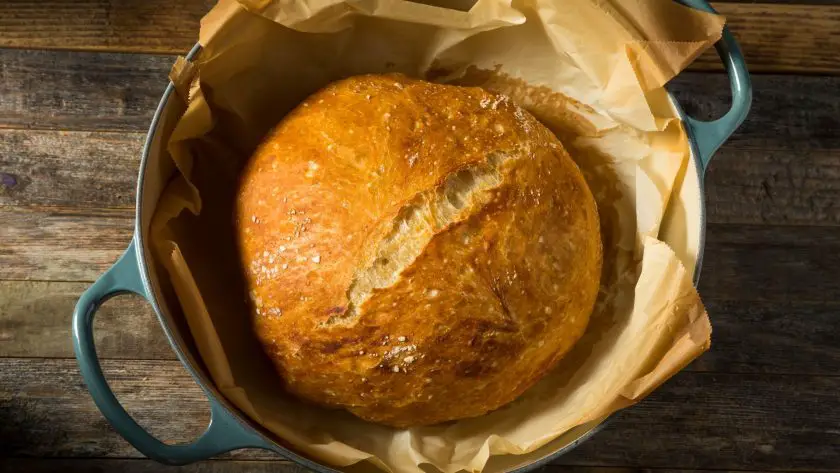
Rye Sourdough
For those who love the hearty taste of rye bread, rye sourdough bread is a fantastic choice. Rye flour gives this type of sourdough bread a wonderfully rich, malty flavor and dense, chewy texture.
Rye Varieties
There are a few different types of rye flour that can be used to make rye sourdough loaves. Light rye contains more endosperm, producing a milder flavor and lighter color. Dark rye flour has more bran and imparts an earthy, robust taste and darker crumb. Pumpernickel flour is the coarsest rye ground from the whole rye berry for an intense rye flavor.
Combining different rye flours creates depth of flavor. Often a blend of light and dark rye is used. The light rye lends a softer texture while the dark rye provides a complexity of flavor. Small amounts of wheat flour help give the bread better rise. Play around with different ratios to find your perfect rye sourdough.
Use your loaf to make sourdough rye sandwich bread and try many fantastic combinations!
Taste Profile
With its rich color and hearty taste, rye sourdough makes fantastic sandwiches and complements hearty soups like split pea or bean. The tangy sourdough helps balance the strong rye notes. Slice rye sourdough thin to temper the denseness.
Rye sourdough also shines for breakfast toast or with savory ingredients like cured salmon, avocado, eggs, and bacon. The nutty, earthy flavor profile pairs wonderfully with smoked meats as well.
For those who want to venture beyond conventional wheat bread, nutritious rye sourdough offers a world of complex flavors to discover. Its sturdy texture also makes it an ideal bread for sandwiches.
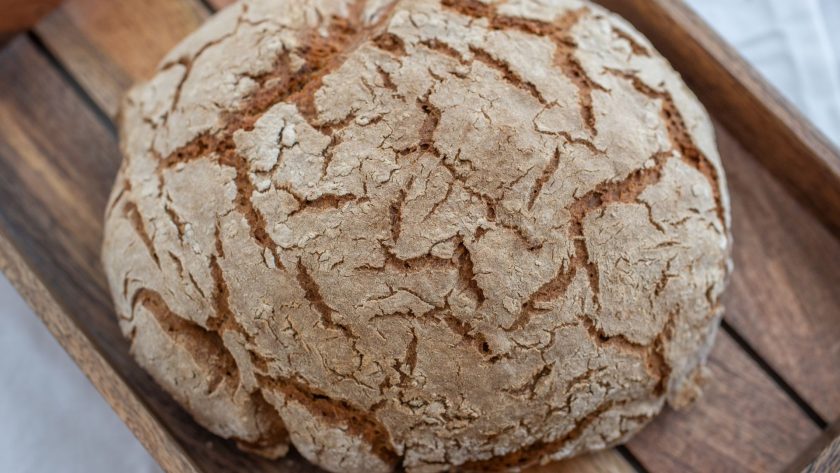
Borodinsky Bread
Borodinsky bread is a dark, rich Russian sourdough with a fascinating history. This staple of Russian cuisine can trace its origins back centuries, with the first known mentions dating to the 1800s. Its uniqueness comes from the blend of rye and wheat flours along with a special Russian sourdough starter that lends a complex tangy flavor.
Distinct Ingredients
Unlike a basic sourdough, Borodinsky bread contains unusual ingredients that give it a distinctive personality. Coriander seeds impart a subtle fruitiness while molasses provides a sweet complexity. The interplay between the spicy, sweet, and sour notes creates a depth of flavor. Along with rye flour, wheat flour helps counter the denseness from the rye. Traditionally, the bread gets its dark color from bran added to the dough. These special ingredients transform simple sourdough into an unmistakably Russian treat.
Cultural Significance
In Russia, Borodinsky bread carries important cultural meaning. It’s named after the Battle of Borodino in 1812 when Russia defended itself against Napoleon. The bread became a symbol of Russian pride. Baked with rye flour instead of scarce wheat, it represented the spirit of the common people. To this day, Borodinsky remains a staple in Russian households, often served with soups and stews. For an authentic taste of history, be sure to try this unique Russian sourdough classic.
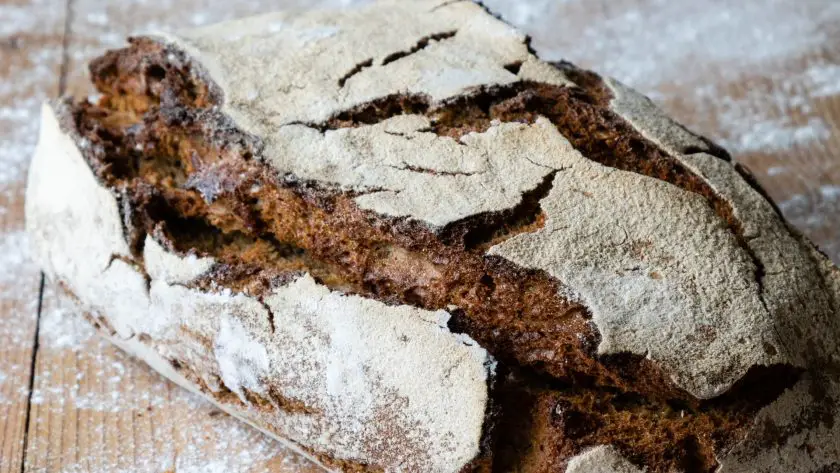
San Francisco Sourdough Bread
San Francisco sourdough bread boasts a unique tangy, sour flavor profile not found in other sourdough varieties. This distinctive taste comes from wild yeast strains native to the San Francisco area, particularly the Lactobacillus sanfranciscensis bacteria.
The origins of San Francisco sourdough stretch back to the California Gold Rush era of the mid-1800s. During this period, miners and settlers carried sourdough starters across country in flour sacks. The natural yeasts present in the San Francisco air gradually influenced these starters, resulting in a singular sourdough unlike any other.
As the city grew, bakeries adopted the locally cultivated starters into their bread recipes. Soon the San Francisco sourdough, with its mouth-puckering sourness, became synonymous with the area. Local bakers jealously guarded their starters, considering them almost like the secret formula for Coke.
Today, authentic San Francisco sourdough retains its wild yeast funkiness. The long, cool fermentation allows complex lactobacilli flavors to develop. Biting into a loaf, your tastebuds sing with bright sourness balanced by mild sweetness. The chewy crumb carries a hint of salty brininess. It’s a taste of San Fran history in every bite.
So for sourdough with a true San Francisco pedigree, look for breads made with an original SF starter. The wild yeasts of the city impart a distinctive sour tang you won’t find anywhere else. San Francisco sourdough proudly reflects the uniqueness of the city itself.
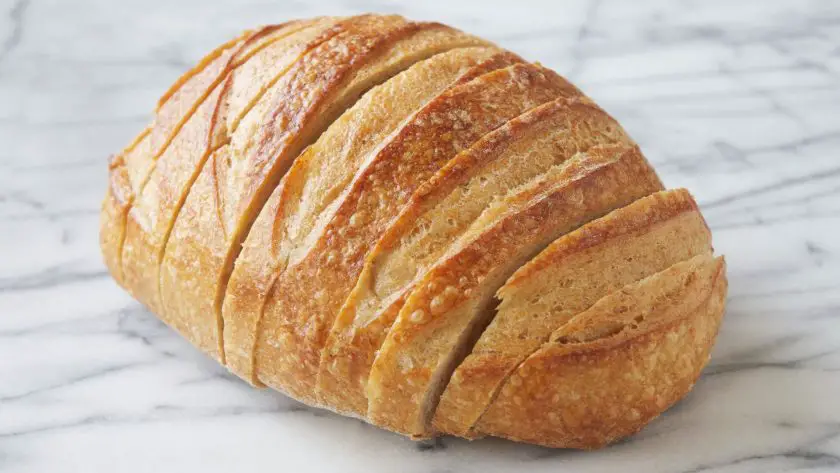
Spelt Sourdough Bread
Ancient Grain with a Modern Twist
If you’re seeking a nutritious twist on classic sourdough, look no further than spelt sourdough bread. Spelt is an ancient grain that packs a nutritional wallop, making it a wholesome alternative to regular wheat flour. Baking it into sourdough allows you to enjoy those benefits in a tasty, artisanal loaf.
Nutritional Benefits
Spelt is rich in protein, fiber, B vitamins, and minerals like iron, magnesium and zinc. Since it’s an ancient grain, it hasn’t been hybridized and genetically modified like modern wheat. This makes its nutritional profile closer to its original form. Baking with wholesome spelt flour gives your sourdough bread a big boost of vitamins, minerals and antioxidants compared to regular wheat.
Distinct, Nutty Flavor
In addition to added nutrition, spelt flour also provides a delicious flavor. It has a mildly nutty, earthy taste that’s a bit sweeter than regular wheat. When fermented into sourdough, that sweet nuttiness balances beautifully with the tangy sourdough notes. Spelt gives you the nutrition of whole grain with a pleasantly mellow flavor.
So if you want to enjoy an ancient grain with a modern twist, give spelt sourdough a try. Its great taste and stellar nutrition will have you discovering the joys of baking with ancient spelt. You can feel good about serving your family nutritious slices of this tasty homemade bread.
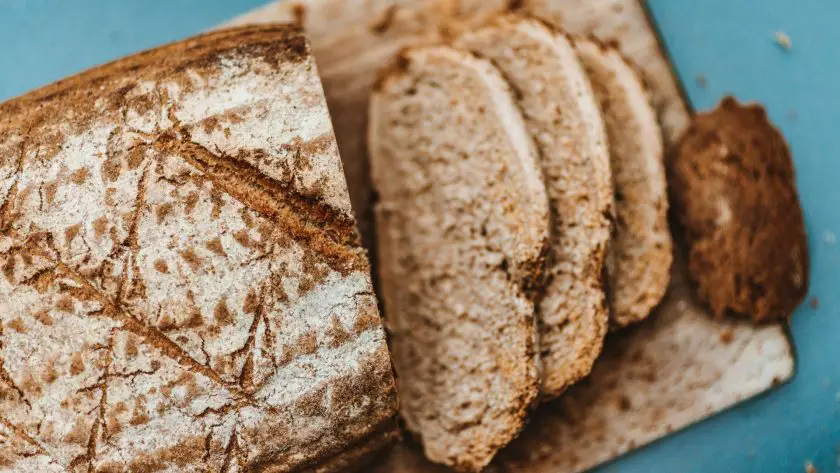
Sourdough Potato Bread
Homemade sourdough bread gets an extra moist, hearty twist with the addition of mashed potatoes. The potatoes blend seamlessly into the dough, creating a uniquely flavored and textured loaf.
Enriched, Pillowy Texture
Mashed or riced potatoes lend a wonderfully soft, pillowy crumb to sourdough bread. The extra moisture from the potatoes keeps the bread light and fluffy. The potatoes also add tenderness that complements sourdough’s signature chew.
Bakers can play around with different types of potatoes too. Starchy russets yield maximum softness while waxy potatoes like reds or Yukon Golds provide color and subtle earthy flavor. Mixing potato varieties creates complex tastes and textures.
Adaptable Potato Sourdough
Potato sourdough bread has enough versatility to be baked into a variety of shapes like rolls, braids, and loaves. The potato-infused dough takes well to mix-ins like rosemary, bacon, cheddar or scallions too. It’s great for sandwiches or served alongside hearty soups and stews.
For those seeking a change from regular sourdough, give potato sourdough a try. The potatoes create a uniquely moist, delicious bread with plenty of artisan potential. They add great texture and just a touch of rich, earthy potato flavor that balances beautifully with the tangy sourdough notes.
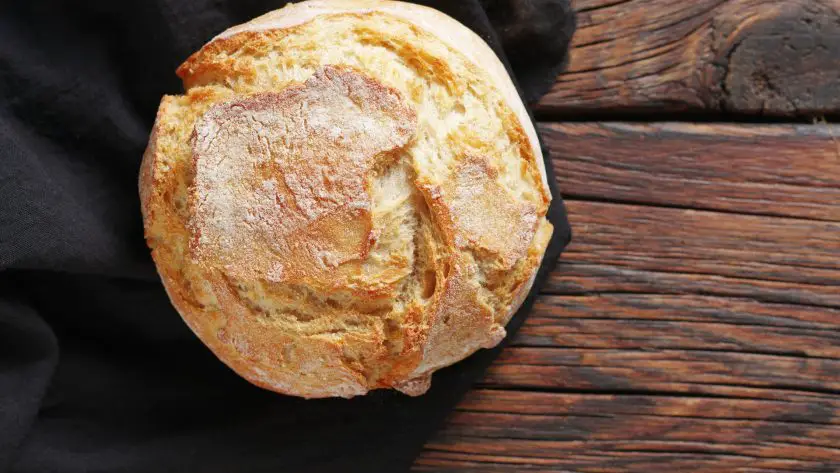
Amish Friendship Bread
Amish friendship bread is a sweet sourdough bread made from a starter that is often shared within the Amish community. This tradition of passing the starter from friend to friend helps foster a sense of community. The origins of Amish friendship bread are uncertain, but the custom of starter sharing has endured for generations.
To make Amish friendship bread, a portion of the starter is combined with flour, sugar, milk, and eggs. The starter lends a pleasing tang and rise to the dough. After kneading, the dough is allowed to proof multiple times, developing more complex flavors. The resulting bread is slightly dense with a mildly sour taste complemented by sweetness from the added sugar. Slices of Amish friendship bread make for a tender, cake-like treat.
Beyond its great taste, the communal act of passing on the starter has become an expression of Amish culture. As friends swap jars of active starter, they strengthen social bonds and preserve generations-old baking traditions. For a wholesome taste of Amish heritage, try baking up a loaf of friendship bread using a shared starter.
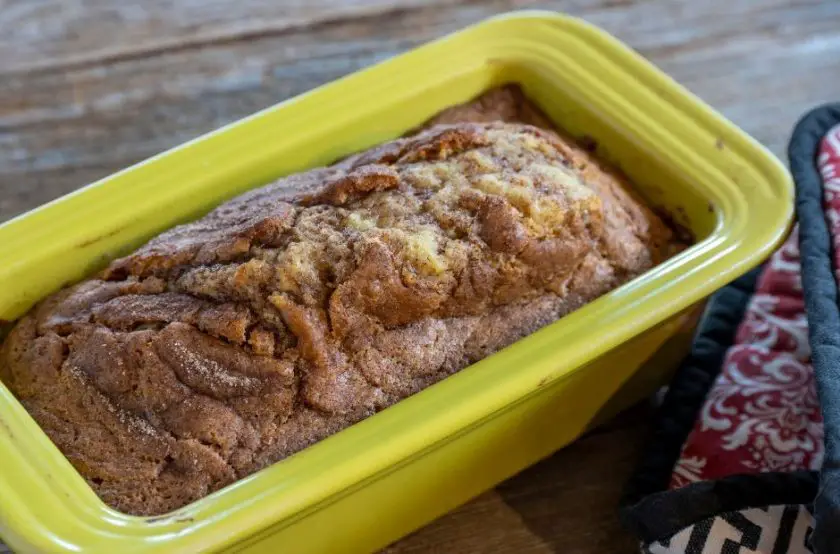
Maltese Bread
In Malta, crusty Ħobża Maltija sourdough is a diet staple and cultural icon. Shaped into a rounded loaf, Maltese bread has a chewy interior with a thick, crunchy crust. Its unique taste comes from a natural starter made with local seawater. The briny seawater adds complexity while helping strengthen the gluten.
Ħobża Maltija is traditionally baked in wood-fired stone ovens which impart subtle smoky undertones. Slashing decorative patterns on the top allows steam to escape, creating a hard, crispy crust. Served daily at Maltese tables, this bread is torn and dipped into dishes like Bragioli beef stew. Ħobża Maltija represents Malta’s culinary heritage and Mediterranean flavors.
Pumpernickel
With its deep brown hue and robust texture, pumpernickel bread provides an intense rye experience. Traditional pumpernickel hails from Germany, where it’s made with coarsely ground rye flour and baked for up to 24 hours. This extended bake gives it an earthy, molasses-like flavor.
The rye flour and addition of rye sourdough starter provide a tangy taste and dense crumb. Painstakingly slow steaming and baking in a low temperature oven allows complex flavors to develop in the bread. Traditional pumpernickel loaves will be moist and very dark brown, sometimes even black.
For the ultimate taste of old-world rye bread, slice up traditional pumpernickel from Germany. Its rich color mirrors the complexity of flavor locked into each slice. The hearty taste and hearty nutrition make pumpernickel an indulgent yet gut-healthy choice.
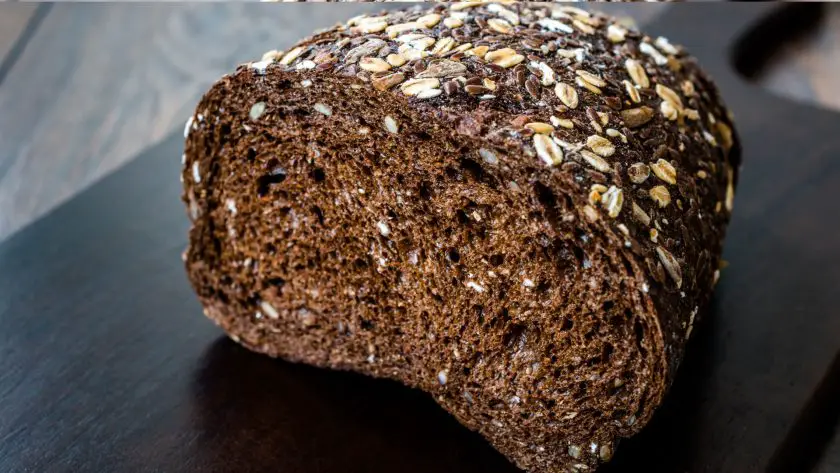
Gluten-Free Sourdough
Baking scrumptious sourdough bread without gluten is absolutely possible for people with celiac disease or gluten intolerance. With some adjustments, you can create a tasty loaf that’s safe for gluten-free diets.
Gluten-Free Flour Blends
Gluten-free flours lack the proteins necessary to develop gluten, so a blend is needed to emulate the texture of wheat bread. Good gluten-free sourdough bread uses a mix like brown rice flour, tapioca flour, sorghum flour, and potato starch. These provide structure while keeping the bread 100% gluten-free. Xanthan gum can help with rise and elasticity too. Experiment with your own flour blend to perfect the flavor and texture.
Feeding Your Starter
A standard wheat starter won’t work for gluten-free sourdough. Create your own gluten-free starter or buy one online. Feed it frequently with your gluten-free flour blend to keep it active and bubbly. Maintaining a lively starter ensures your bread rises properly.
Proofing and Baking Tips
With gluten-free dough being more delicate, be gentle when handling it. Allow for adequate proofing time as it won’t rise as fast. Bake your loaf a bit longer than wheat bread at a slightly lower temperature, as gluten-free dough can dry out faster. The result is a tasty and safely gluten-free sourdough with that signature tang and chewy crumb.
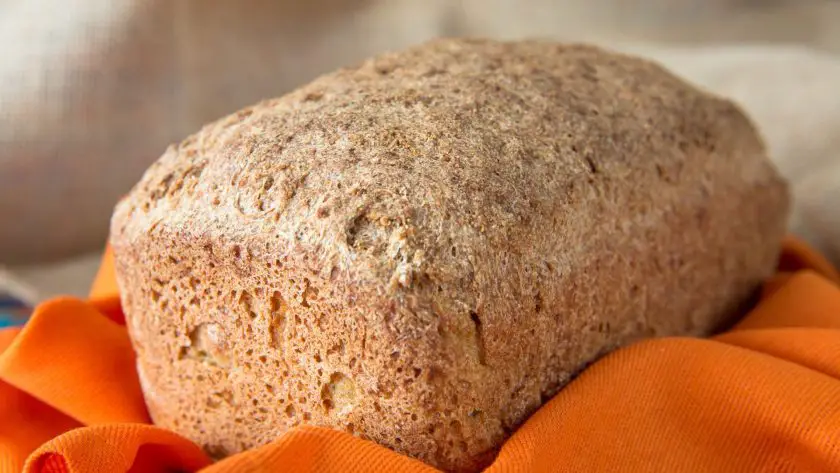
Sweet Sourdough Varieties
While sourdough is known for its tang, bakers can also use it to create sweet baked goods. By adding sugar, honey, fruits, and other sweeteners, sourdough’s complexity perfectly balances out the sweetness. Sweet sourdoughs make for comforting breakfast treats, desserts, and snack breads.
Sweet Breads
For breakfast or an afternoon pick-me-up, sweet breads add indulgence to the day. Banana sourdough bread lends natural sweetness and moisture. Cinnamon swirl sourdough delights with aromatic spice and ribbons of cinnamon sugar. Chocolate chip sourdough cookies offer chunks of melty chocolate in every bite. The sourdough fermentation yields superior flavor in all these sweet treats.
Fruited Sourdoughs
Dried fruits like raisins, cranberries, cherries or fresh berries elevate sourdough’s flavor. As the bread proofs, the fruits rehydrate and plump, providing bursts of juicy sweetness. Try baking a cranberry walnut sourdough for Thanksgiving or a raisin cinnamon swirl bread to enjoy all season long. Let your creativity run wild mixing and matching fruits and flavors.
Sweet Sourdough Desserts
For a showstopping dessert, bake sweet sourdough treats like doughnuts, babka, or hot cross buns. The tangy, complex flavor profile plays beautifully with sweet glazes, fillings, and toppings. You can also utilize discard starter in pancakes, waffles, and quick breads. With a dollop of homemade jam, sourdough desserts become extra special.
So Many Types of Sourdough to Try!
Sourdough’s tangy flavor profile adapts well to a variety of bread styles. From nutritious ancient grain loaves to gluten-free varieties, bakers can innovate with sourdough. Its complex fermentation imparts superior texture and taste. Even sweet sourdoughs like cinnamon rolls balance the sourness beautifully. With time and care, you can cultivate a lively starter and bake gorgeous artisan loaves.
Sourdough rewards the patient baker. This ancient leavening method remains popular for its hearty, addictive flavor and lovely crusty chew. For those seeking to level up their homemade baking skills, familiarizing yourself with sourdough offers endless possibilities for exploration and delicious baked goods.
Types Of Sourdough Bread: FAQs
Are there different kinds of sourdough bread?
Yes, there are many varieties of sourdough bread! Some common types include traditional sourdough made with a starter, whole wheat sourdough for added nutrition, rye sourdough with a rich malty flavor, and sourdough made with ancient grains like spelt for extra texture and taste. The possibilities are endless when it comes to experimenting with flavors, textures, and shapes.
What is the healthiest sourdough?
For the most nutritious sourdough, choose one made with whole grain flour. Whole wheat sourdough retains all the bran and germ of the wheat berry, packing in extra protein, fiber, B vitamins, and minerals. Other great healthy options include rye sourdough made with nutrient-dense rye flour or sourdough using ancient grains like spelt, einkorn, or kamut which offer a nutritional boost. Ultimately, any sourdough made with 100% whole grain flours will give you the most nutritional bang for your buck.
Which sourdough bread is real?
Real sourdough bread is made with a natural fermented starter, rather than commercial yeast. The starter cultivates wild yeasts and bacteria that provide the rising action. Real sourdough requires an extended fermentation time to develop that characteristic tangy flavor and chewy texture. Look for sourdough made with just a few simple ingredients like flour, water, salt, and a mature sourdough starter. Avoid sourdoughs with additives or dough conditioners, as those diminish the authenticity. Real sourdough takes patience and skill, but the flavor payoff is incredible.
What is the difference between sourdough bread and sourdough discard bread?
Sourdough bread is made from a fully fed and active starter, while discard bread utilizes the discarded starter that is removed when feeding and refreshing your starter. Since discard has less yeast activity, the rise and flavor won’t be as strong in discard recipes. However, discard bread is a great way to use up discard and reduce waste. While not quite as tangy or chewy, it still provides that characteristic sourdough taste.
What are the different shapes of sourdough bread?
Sourdough’s stretchy gluten lends itself to all kinds of creative shapes beyond basic loaves, including baguettes, boules, batards, rolls, braids, focaccia, pizza crust, pretzels and more. Get fun with special molds for round loafs, spirals or wreaths. Shape crispy crackers from leftovers. Any shape you imagine, you can make with sourdough thanks to its strong gluten development and versatility.

